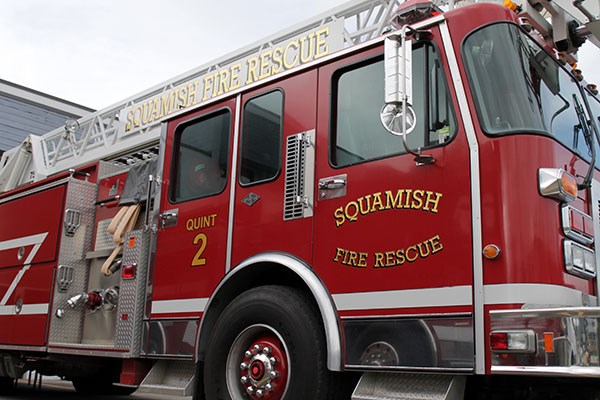Responding to emergencies and fighting fires aren’t the only adversities facing Squamish Fire Rescue. Volunteer retention has become an increasingly difficult exercise.
As of September 16, a total of 16 new recruits have been selected to join the ranks of volunteers who give their time helping keep Squamish safe in return for a positive moral sentiment. They’ll go on to complete 200 hours of training over six months costing $5,000 before they are able to respond to emergencies.
Because of a continual loss of volunteers, the annual recruitment is necessary to sustain adequate numbers of fire fighters. Squamish Fire Rescue employs seven full-time, career members and keeps between 50 and 60 volunteers on the roster. Typically, the department takes on eight to 10 new recruits each year, but this year they’ve opted for more as some of the candidates had previous experience, and the department skipped last year’s recruitment.
“In the last three years, we’ve lost eight to 10 volunteers each year,” said fire chief Russ Inouye, who has been with the department for a quarter of a century.
“Some go to career fire departments in Vancouver, Burnaby or the Lower Mainland. The others leave because either they can’t afford to live here anymore and they move away, or they’ve taken jobs that don’t allow them to commit the time.”
The $5,000 required for volunteers goes toward training them to a level of proficiency and safe action as well as special “turnout gear” or equipment including boots, helmet, fire retardant jacket and pants. The price for this alone is $2,500 to $3,000 per individual. Equipment is individually tailored and must fit properly in order to function correctly. Training includes the basic fire fighting as certified by the Justice Institute, as well as the specifics for Squamish Fire Rescue.
“Our retention issues aren’t so much different than other fire department’s retention issues in the province of BC. We’re all experiencing the same issues for the same reasons to varying degrees,” said Inouye, noting that Squamish has a reputation for training quality volunteers.
Presently, the department asks for a minimum three-year commitment for at least two hours of training a week, in addition to responding to calls and attending special events like the Terry Fox Run and Cycling for Suicide Prevention.
“We’re looking at whether paying people might be an option. That’s called a paid on-call system, where the time that they spend here they actually get paid for,” Inouye said.
He also mentioned that a top-down solution could address the issue.
“Rather than each department developing their own strategy, it might be time that the provincial government start looking at a provincial fire service.”
He cited Toronto as a successful example.
“They’ve amalgamated all the fire departments into one regional fire department,” he said.
“If they went and did that for all of B.C. or the Lower Mainland and divided them into zones, I think that might combat it a little. They could train people and put them into a hiring pool, and or a volunteer pool and hire from that.”
He said the culture around volunteer fire fighters is changing.
“We’re finding less interest for being a volunteer, for being a member of the group, part of a family. I’m not sure exactly why, but it seems to me that it’s less important than it was 25 years ago.”




